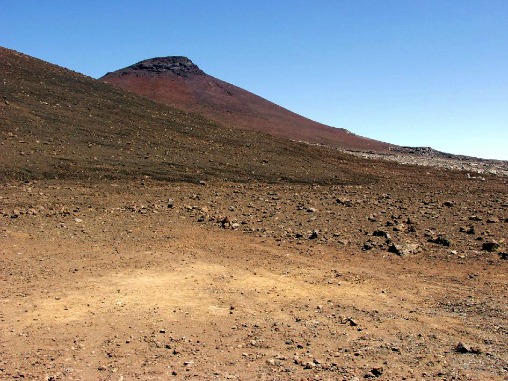In initial tests, NASA's Mars rover Curiosity has discovered that Martian soil is an awfully lot like Hawaiian sand.
The super rover, which has been working on Mars since this past August, ran its first soil samples over the past few weeks, analyzing it for its mineralogical makeup. The soil tested appears to be similar to dust and fine soil widespread on Mars, say NASA scientists.

And that soil is testing out to be very similar to weathered basaltic soil produced by ancient volcanoes. Similar soil is found in the Hawaiian islands.
"Our team is elated with these first results from our instrument," said David Blake, NASA's principal investigator for Curiosity's Chemistry and Mineralogy instrument. "Our quantitative results provide refined and in some cases new identifications of the minerals in this first X-ray diffraction analysis on Mars."
Early this month, Curiosity scooped up its first sample of Martian soil when it came across a sandy area that NASA scientists decided would be a good spot for the rover to stop and study.
The analysis is all part of the rover's mission to discover if Mars was ever capable of sustaining life, even life as small as microbes.
Curiosity, which carries 17 cameras and 10 scientific instruments, already has had good luck.
The soil analysis comes on the heels of NASA's announcement in late September that the rover had found evidence of a "vigorous" thousand-year water flow on the surface of Mars.
With the discovery of water, one of the key elements needed to support life, the rover is now looking for other necessary elements, such as carbon in soil or rock fragments.
Curiosity's first real soil work showed NASA scientists that Martian soil is similar to weathered basaltic soils of volcanic origin in Hawaii.
NASA said the sample has at least two components. One part was made up of dust distributed globally in dust storms and the other part was fine sand originating more locally.
"Much of Mars is covered with dust, and we had an incomplete understanding of its mineralogy," said David Bish, a NASA co-investigator with Indiana University. "We now know it is mineralogically similar to basaltic material, with significant amounts of feldspar, pyroxene and olivine, which was not unexpected. Roughly half the soil is non-crystalline material, such as volcanic glass or products from weathering of the glass."
He also noted that the soil shows that it went through a transition over time from a wet to dry environment.
"The ancient rocks, such as the conglomerates, suggest flowing water, while the minerals in the younger soil are consistent with limited interaction with water," Bish said.





